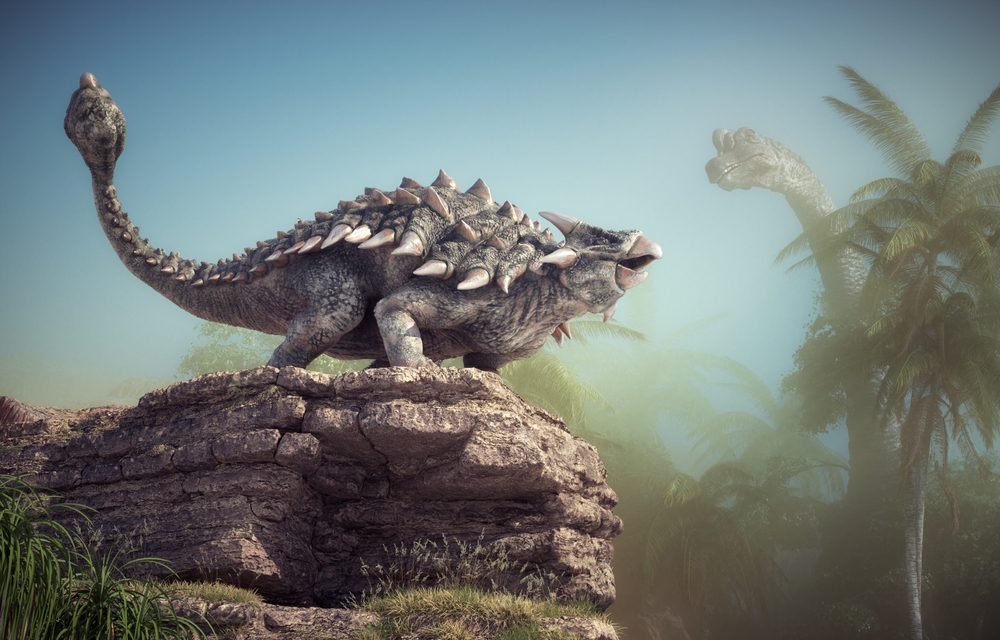Tail Clubs Weren’t Just for Ankylosaurs – Some Sauropods Had Them, Too
Posted on Categories Discover Magazine

Tail clubs were rare a trait that didn’t survive past the Pleistocene, a period that ended about 11,700 years ago.
The last species to have them were glyptodonts – large dome-shaped armadillos from South America, and extinct turtle species from South America and Australasia. Before this, only two species of dinosaurs had tail clubs: the quadrupedal armored tanks known as ankylosaurs and the long-necked sauropods.
Of those approximately 250 sauropod species, only three were known to have tail clubs. Those three were from basal (or early forms of) sauropods from China. That number has now jumped to four, thanks to research published in September 2024.
A New Sauropod With a Tail Club
The newest tail club member, Kotasaurus yamanpalliensis that was also a basal sauropod, comes from the Jurassic of India, about 201.4 million years to 145 million years ago.
The species itself is relatively new to science and was discovered in the 1970s. Geologist and paleontologist, P. Yadagiri first named the fossil in 1988, after excavating the fossils of about 12 individuals of different ages at a site in south-central India. That site produced over 800 vertebrate fossils that remain in the collection of the Geological Survey of India Southern Region in Hyderabad.
Jeffrey Wilson Mantilla is a co-author, professor, and curator of the Museum of Paleontology at the University of Michigan. He had reviewed the approximately 400 fossils related to K. yamanpalliensis in 2001 and realized that four were tail clubs. This led to the eventual research of those tail clubs from lead author Tariq Abdul Kareem.
“Basal sauropods represent roughly 10 percent of all known sauropods,” Kareem explains, “yet all the known sauropod tail clubs are from these basal taxa. This distribution makes it look unusual, but we do not know much about the relationships of basal sauropods and much less about what these tail clubs were used for.”
Read More: How Sauropods Evolved to Their Enormous Size
Researching Tail Clubs
Much of tail club research has focused on ankylosaurs. It has largely been believed that their tail clubs were defense weapons, but a 2022 paper challenged that hypothesis saying that tail clubs may have been used for combat between ankylosaurs during mating season.
Could the same be true of K. yamanpalliensis? The challenge in studying basal sauropods, Kareem says, is due to the small number and fragmentary state of available fossils. This makes it difficult to ascertain any intraspecific usage.
And why would defense be a primary purpose? The approximately 36-foot long dinosaur was substantial. But fossils of coexisting predators have not yet been found in India, Kareem notes.
The team turned to CT scanning to uncover more about the K. yamanpalliensis tail clubs. On the outside, Kareem says, “there are signs that these tail clubs are basically vertebrae that have been fused together and then modified.”
If they were indeed modified vertebrae, CT scanning would show the neural canal: “an internal canal that the spinal cord runs through,” he explains. Which is exactly what they found.
Read More: These Dinosaurs Did Battle With Their Tails
Fossil Growth Rings
But they also found evidence of potential growth rings – a surprising revelation if true, as most growth rings are known from other parts of dinosaur skeletons such as femurs or ribs.
The team is cautious with this finding, stating that further research is needed. But the evidence suggested that tail clubs in K. yamanpalliensis changed shape as the animal grew, corresponding to those growth rings.
“One of the important aspects of this study is the realization that their sampled tail clubs come from K. yamanpalliensis at different body sizes,” says Kristi Curry Rogers, a vertebrate paleontologist at Macalester College who was not involved in the research, “including smaller and larger individuals. Data like these make it possible to begin to understand how tail clubs changed throughout life, and how they consolidated from vertebrae at the tip of the tail.”
Most of what we know about sauropods comes from the neosauropods, or new sauropods, the species that evolved millions of years after the basal forms like K. yamanpalliensis. Among them are the giants many of us recognize from museums or movies such as Brachiosaurus, Apatosaurus, and Diplodocus.
But studying these later species, Kareem says, “tells us little about their early evolutionary history, before they had a cosmopolitan presence and reached extreme body sizes.” Which is why studying the earlier forms such as K. yamanpalliensis is so important.
Indeed, “Kotasaurus and the tail clubs are just one picture of the unique fossils that India has to offer,” Kareem adds.
Read More: Dinosaur Dimensions Weren’t One-Size-Fits-All
Article Sources
Our writers at Discovermagazine.com use peer-reviewed studies and high-quality sources for our articles, and our editors review for scientific accuracy and editorial standards. Review the sources used below for this article: